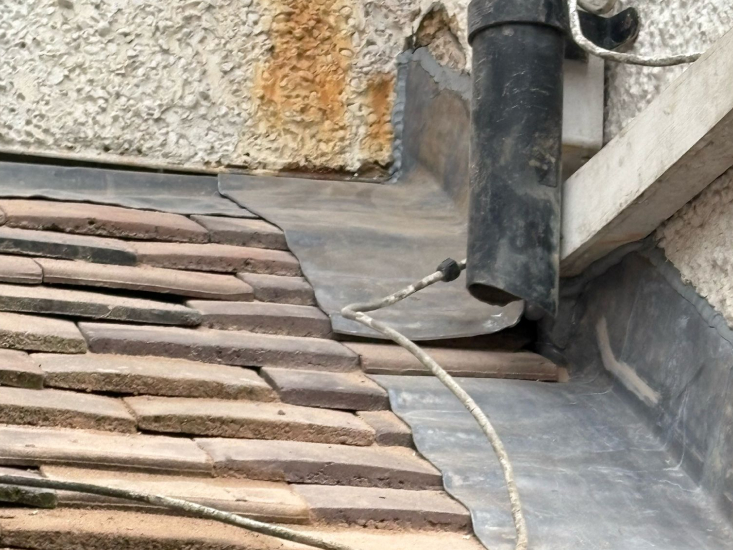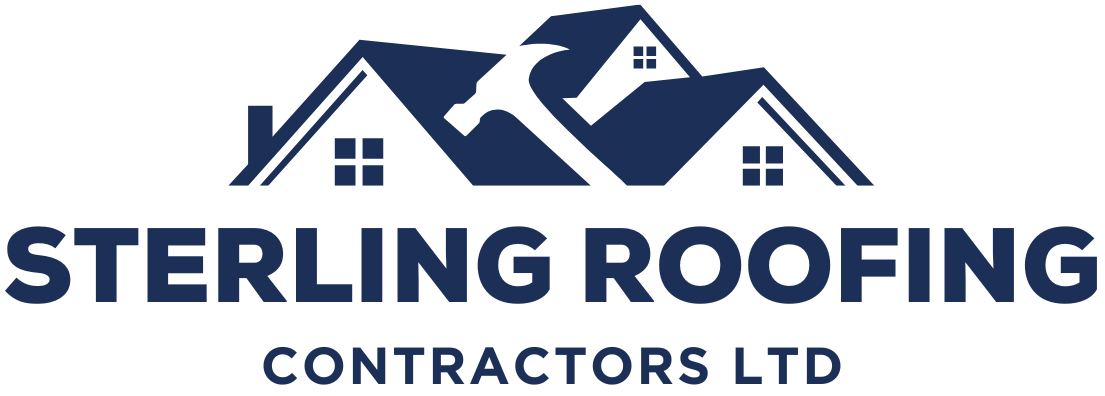Lead flashing plays an integral part in a roofing system, helping to prevent structural damage and water leaks. Mainly installed around chimneys, roof junctions, and valleys, it forms a shield against any possible moisture infiltration. Its prolonged exposure to rough weather, temperature fluctuations, and general wear eventually causes extensive damage. Identifying the signs of damage to lead flashing can help prevent expensive repairs and safeguard the roof’s integrity.
Signs Your Lead Flashing Needs Repair or Replacement
Deteriorating or damaged lead flashing can adversely impact the roof’s effectiveness, causing extensive leaks and structural issues. Recognising the issues sooner helps homeowners take proactive steps before any serious damage occurs.
Visible Cracks or Splits in the Lead
An expertly maintained lead flashing can stay in perfect condition, offering an effortless shield against water. Splits, cracks, or fractures eventually develop due to extensive exposure to the weather’s extremes. Hail, strong winds, and temperature changes cause the metal to expand or contract, causing stress fractures. When left unaddressed, these small gaps allow moisture to penetrate the roofing materials, leading to more damage. A reputed roof leadwork contractor can evaluate the seriousness of the issue and suggest the best repairs.
Water Stains on Ceilings or Walls
An unexplained water stain on the walls or interior ceiling can indicate a damaged lead flashing. Such stain surfaces as discoloured patches lead to moisture penetration. A flashing is mainly built for redirecting water off from the areas at risk, and any breach in the structure leads to water leaks into your home. Proper lead roof maintenance can help identify the signs of damage before leaks cause expensive interior repairs.
Corroded or Deteriorated Lead Flashing
The lead flashing naturally creates a protective patina that helps to improve the roof’s durability. However, excessive exposure to pollutants, acidic rain, or salt-laden air can pace up corrosion. Discoloured, pitted, or flaky lead surfaces lead to the breakdown of materials, abating their potential to offer adequate protection. Hiring an emergency roofer to assess and replace the corroded section prevents extensive damage.
Loose or Detached Flashing
The lead flashing should be fixed securely to the roofing structure. If the area appears lifted, loose, or completely detached, then the underlying materials become prone to water infiltration. Improper installation, strong winds, or ageing fasteners contribute to the displacement. A professional can help to restore or replace the affected parts of the leadwork, ensuring peak performance.

Signs of Failing Gutters Near Flashing Areas
The roofing parts often work together to protect the home, making it important to inspect the gutters whenever flashing issues surface. Sagging or blocked gutters often lead to overflowing water, increasing the risk of moisture damage along the flashing seams. The combined signs of failing gutters or damaged lead flashing can lead to faster structural decay. Routine inspections and maintenance can help resolve the issues.
Increased Energy Bills Due to Poor Insulation
The lead flashing is mainly responsible for promoting roof insulation and preventing heat loss, especially in the winter. Any damage, cracks, or gaps make air escape, forcing your heating systems to work harder. Any sudden increase in energy bulls indicates an issue with the flashing or roof integrity. Finding a licensed roofer ensures a complete roof evaluation and the right solutions.
Effective Solutions for Lead Flashing Repairs
Once you identify the signs of damaged lead flashing, on-time roof repairs can prevent any extensive complications. The professionals approach these issues based on their expertise to prevent the extent of damage.
Resealing Minor Cracks and Gaps
Premium-grade roofing sealant can seal any small cracks or separations along the flashing seams. It is a temporary fix that helps prevent water leaks while homeowners schedule a professional roof repair service. The sealants offer a waterproof shield; however, they are not a long-term solution for extensively damaged flashings.
Replacing Severely Deteriorated Lead Flashing
Whenever the flashing shows any notable signs of fractures, corrosion, or a full detachment, replacement is the best option. A new roof installation is a requisite for widespread deterioration impacting different areas of the roof. Skilled roofers can help remove the damaged flashing by installing the new sections for a watertight seal.
Reinforcing Flashing with Additional Fasteners
Loose flashing caused by inadequate securing can be reinforced with lead clips or specialised fasteners. This helps prevent further displacement and improves the flashing’s stability. Professional leadwork experts ensure that the fasteners are installed appropriately without damaging adjacent roofing materials.
Addressing Gutter Issues to Prevent Further Damage
Signs of failing gutters can lead to damaged lead flashing. A roofer has the skills to perform extensive inspections and suggest the requisite adjustments, addressing the blockages, misalignment, or structural weaknesses in the gutters. Appropriately functioning gutters can help direct water away from the areas of the roof at risk, reducing any additional pressure on the flashing seams.
Scheduling Regular Lead Flashing Inspections
Preventative maintenance plays a pivotal part in extending the lead flashing’s lifespan. Hiring a licensed roofer for routine inspections can help identify potential issues sooner. A roofing expert can evaluate the weathering effects, structural integrity, and overall roofing condition by using minor repairs before any extensive damages.
Conclusion
A professionally maintained roof can help safeguard your home against leaks, water damage, or structural deterioration. Investing in premium leadwork and professional roofing services ensures the perfect roof durability and peace of mind for property owners. At Sterling Roofing Contractors Ltd, we specialise in expert lead roof maintenance, repairs, or full installation, delivering trustworthy solutions streamlined to meet your needs. Our team of expert roofers offers a prompt response to address emergency roofing needs. Contact us today for a no-cost roof survey!
Frequently Asked Questions
How Long Does Lead Flashing Typically Last?
With proper maintenance, lead flashing can last over 50 years. However, factors like weather conditions, poor installation, and pollution can shorten its lifespan, requiring periodic inspections and repairs.
Can Lead Flashing Be Repaired?
Absolutely! The loose sections or minor cracks can be reinforced or resealed. However, any seriously damaged flashing may involve replacement. Contact us for a professional roof survey and the best repair solutions.
Can Damage Lead Flashing Attract Pests?
Yes, gaps in flashing create entry points for pests like birds and insects. Addressing flashing damage promptly helps maintain a secure and pest-free roofing structure.
